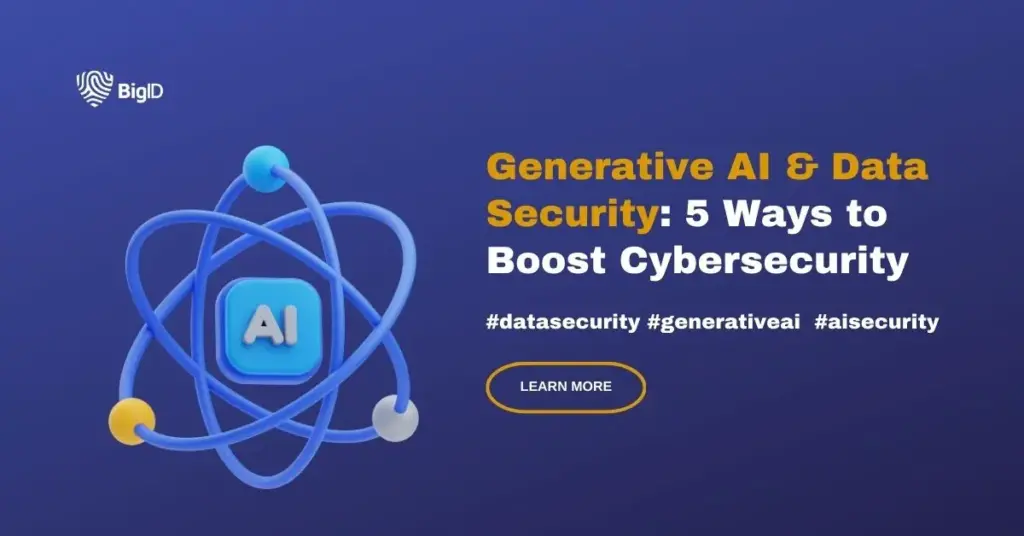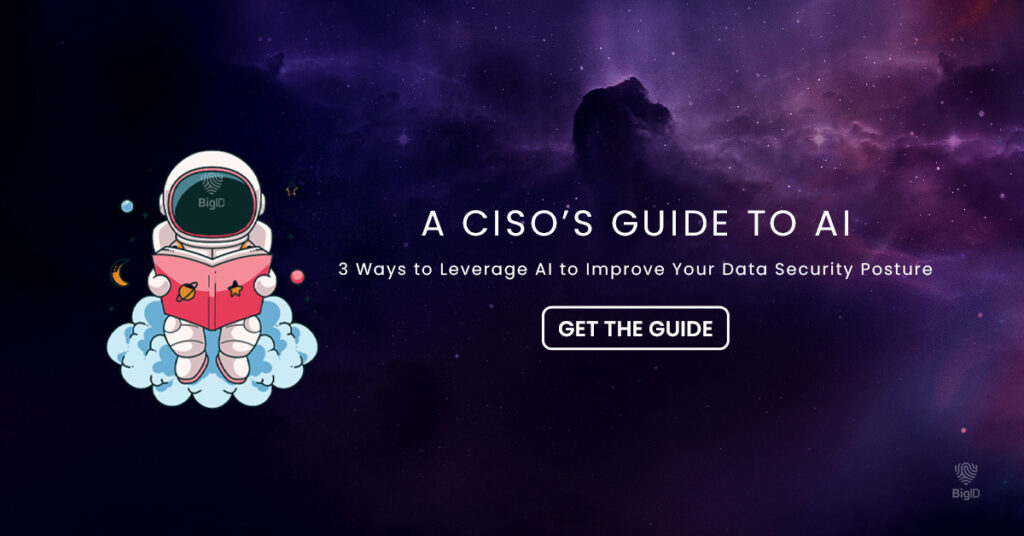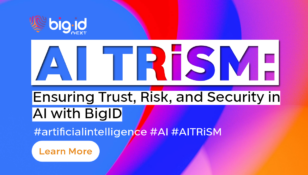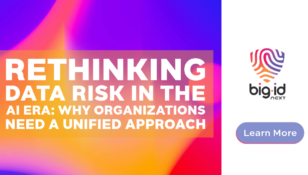Generative AI & Data Security: 5 Ways to Boost Cybersecurity

In the wake of growing data security concerns, the rise of large language models (LLMs) that power generative AI capabilities offers robust tools to safeguard our valuable information.
This blog explores the remarkable ways this technology enhances security for stored information. By harnessing its power, we can fortify our defences with generative AI data security and stay one step ahead of cyber threats.
1. Detecting Anomalies with Unprecedented Precision
Generative artificial intelligence (or GenAI) algorithms have remarkable pattern recognition capabilities. They empower your organization’s security operations to identify anomalies and potential security breaches with precision.
Research conducted by cybersecurity analysts reveals that by incorporating generative AI-based anomaly detection systems in your security tools, you can reduce false positives by up to 70%. This allows you to focus on actual threats instead of dealing with false alarms, and gives you the clarity and space to develop more efficient and effective threat mitigation strategies.
2. Fortifying Access Controls
One of the ways data can be compromised is if someone without the authority can retrieve it. Generative AI can be used to safeguard against unauthorized access by reinforcing access controls.
GenAI algorithms can identify suspicious activities by learning and adapting to evolving patterns. The system won’t act if the user behaviour matches acceptable parameters, reflecting a security policy tailored for generative AI security. However, if it identifies a potential threat, it will swiftly notify security personnel.
Statistics show that organizations that leverage generative AI-based access control systems witness a 40% decrease in successful unauthorized access attempts.
3. Strengthening Encryption Protocols
The encryption of confidential data helps protect information from unauthorized access. Generative AI can significantly enhance encryption protocols by generating robust cryptographic keys and optimizing encryption algorithms. Research indicates that AI integrated into encryption processes can boost the resistance against brute-force attacks by up to 50% and add an extra layer of defence to safeguard sensitive information.
4. Battling Evolving Threats with Adaptive Solutions
Dynamic and adaptive security solutions allow you to keep up with evolving cyber threats. As such, generative AI can learn from and adapt to new threats in real-time and can be used to develop proactive defence mechanisms. These generative AI-based threat intelligence systems can effectively identify emerging threats and take preemptive actions.
Research has demonstrated that such adaptive solutions powered by generative AI can reduce the mean time to detect and respond to threats by up to 60%.

5. Enhancing Cybersecurity Training and Simulation
The human factor remains a significant vulnerability in data and cybersecurity. Luckily, generative AI can play a pivotal role in mitigating this risk. Studies indicate that companies that employ generative AI-based cybersecurity training witness a 45% decrease in security incidents caused by human negligence.
Generative AI can simulate realistic cyber-attack scenarios. These scenarios can train your employees to effectively recognize and respond to such attacks. Through immersive training experiences, you can strengthen your company’s security awareness programs to reduce the likelihood of human error and improve your overall security posture.
Generative AI capabilities represent a game-changer in the realm of information security. By harnessing its power, you can revolutionize your defence strategies and stay ahead of evolving cyber threats, acknowledging the security risks of generative AI.
The statistics and research results presented here highlight the invaluable contributions of generative AI in anomaly detection, access control fortification, encryption protocol strengthening, threat mitigation, and cybersecurity training.
Embracing generative AI is an imperative step towards ensuring a secure and resilient digital future, incorporating robust security controls.
How to Manage Generative AI Risks
Of course, no technology is without flaws and there are some risks involved in the use of generative AI in cybersecurity. However, if you know your AI risks, you and your security team can mitigate them. Here are some concerns with using AI tools and how to alleviate them:
AI Model Safety
LLMs use large amounts of data to learn and understand patterns to predict or generate solutions for complex problems. All of this data is now available for the model to reuse and give out in the form of generated content.
However, in the process of learning, the model might pick up biases. It might also give out personal details or information that could cause harm. The models require certain procedures and policies to operate reliably and ethically to prevent such issues. They also need to follow instructions as per legal requirements and without bias.
A model without such security algorithms can become a vulnerability for the organization that uses it.
To ensure AI data privacy, you need to focus on implementing strict security policy and AI governance through:
- Data discovery
- Data risk assessment
- Security
- Entitlements
Use of Enterprise Data
Your business may employ generative AI to process and analyze enterprise and external data. As a result, you’ll need to manage this data as per regulations for security and compliance. You must understand what data is available to your system since you don’t want sensitive customer data used without the appropriate controls.
The other reason you need data control in such systems is the AI’s ability to mimic human communication. With access to your company’s data, the concern is that the system could be used to create social engineering attacks that lead to users giving out even more personal information.
That’s why you need checks and controls in place to prevent misuse of the stored information by someone who can manipulate your generative AI tool.
Responsible AI data usage requires:
- Data inventory
- Data classification
- Data access and entitlements
- Data consent, retention, and residency
- Data usage audit
Prompt Safety
A prompt is any input you provide to your AI system to get a response. These can be queries from users or system-generated prompts. System prompts, when designed well, result in ethical AI behavior. However, threat actors can use them as attack vectors or malware, if the model hasn’t been taught to recognize and reject dangerous prompts.
To make sure your system prompts are secure, you need to look for:
- Prompt injections and jailbreak
- Sensitive data phishing
- Model hijacking/knowledge phishing
- Denial of service
- Anomalous behavior
AI Regulations
Despite its widespread use, AI is a technology that’s still in its infancy. As generative AI evolves, the regulations and framework to govern it will also change, addressing new privacy and security challenges. There are several AI data governance laws in place to protect sensitive or confidential information, such as the General Data Protection Regulation (GDPR), the California Privacy Rights Act (CPRA), and the European Union’s AI Act (EU AI Act).
Similarly, other countries are developing their own laws and regulations to protect personal information.
The thing is, these laws and policies might change over time. If you’re a business that leverages generative AI, you must implement internal policies and processes that protect your customer data as per regulations. That means you might need to stay ahead of the regulations, so you aren’t blindsided.
How BigID Uses Generative AI for Enhanced Data Security
BigID is the leading provider of data privacy, security, and governance solutions leveraging advanced AI and machine learning for deep data discovery and classification. Gone are the days of hundreds of manual hours and the inevitable human error that comes along with classifying and cataloguing massive amounts of sensitive data.
BigID’s Security Suite offers intuitive and flexible tools like access intelligence and data remediation. Utilizing AI, BigID automatically scans, identifies and correlates privacy-sensitive data based on context and assesses potential risk — giving you a better understanding of your most valuable assets.













